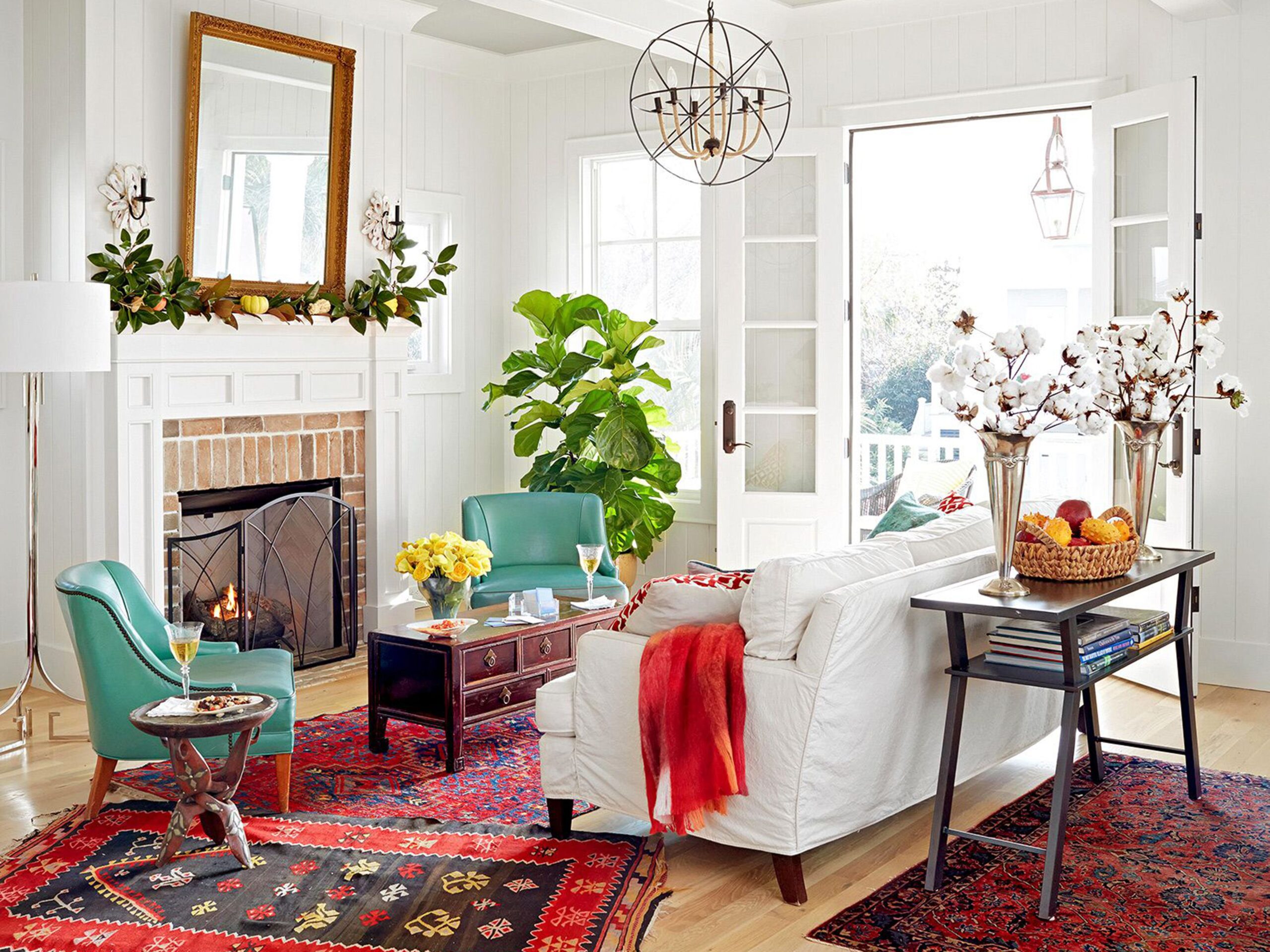
Millennials everywhere are taking design inspiration from the past, bringing back heritage styles—and we’re not talking about midcentury modern. Right now, “bicentennial millennials” are redefining the bicentennial style, a look that gained popularity in the 1970s. A reinterpretation of colonial style, bicentennial decor is layered, collected, and elevated—and now it’s fit for 2024.
You can define this style as a type of Americana design, drawing on bold and saturated primary colors (especially red and blue), folk art, handicrafts, and anything with American symbols like eagles and flags. But the style that’s trending now isn’t a total recreation of the era—there’s a bit of whimsy involved, too. Some of the decor is a bit over the top and tongue in cheek, even veering into kitsch.
But beyond the aesthetics, the most significant impact of this trend has been the increase in millennials who are now interested in collecting antiques after years of eluding them. The key to achieving this aesthetic without making it look dated is to keep it playful and mix and match antiques and modern pieces. With a keen eye for antiques, you’ll create a style that is classic, timeless, and, dare we say, cool.
If you don’t know where to start with antiques, there’s no need to worry. We spoke to an expert about what to look for—and what to avoid—on your quest to create your own vision of millennial bicentennial.
Why do more young people want to buy antiques?
Bicentennial style is one of many of this year’s trends that rely on high-quality items to create an eclectic decor look—along with grandpa chic, coastal grandma, craftcore.
Purchasing antique goods is sustainable, too, a quality that’s prioritized by consumers today—buying items that are already in circulation generally has less impact on the planet than newly-manufactured goods. Whether people look to antiques for their environmental pros or simply like the look, it’s clear that more and more are seeing value in older items.
“While I think there was a brief time when certain generations thought newer meant ‘better‘ when it came to everything … cars, homes, technology, furniture, I do think there’s been a resurgence, especially among young millennials, a nostalgia really, for simpler times and anything that harkens to ‘days of old’ when times were more simple,” says Nancy Barnett, principal designer at Nancy Lane Interiors. “In many cases, there is a quality and history to antique items that is irreplaceable, a patina that quite simply cannot be replicated.”
Barnett also says there’s a practical reason for the resurgence of antiques. When the pandemic shut down production for many furniture companies, antiques could still be easily sourced in many markets, allowing people to avoid long wait times and potential delays to their redecorating projects. And the shift seems to have stuck.
How to Tastefully Incorporate Vintage Pieces In Your Home
Antiques are often beautiful, but you’re probably not looking to live in a replica of Colonial Williamsburg. You want to add special pieces to your home in a way that shows them off but also makes sense with your daily life—and because the bicentennial trend pulls from multiple historical eras, it gives you even more room to play with style and mix and match design themes. You don’t have to stick to the ’70s.
“I’ve always mixed my antique finds among newer, more modern pieces, both in my own home and in client projects,” Barnett says. “I think every antique adds character and a bit of intrigue, a little je ne sais quoi to every room.”
Plus, the centennial style of today makes room for modern-day adjustments that make introducing antique pieces into your decor a little more practical. From choosing the right antiques to picking out performance fabrics for upholstery that match up with modern lifestyles, Barnett says the style is formed through intentional decisions. The balance between old and new is key.
When shopping for your own antiques, style is subjective. But beyond looks, there are some key points to consider with your home’s furniture: Certain design aesthetics may be more popular today, but it pays to focus on the overall quality of a piece as much, if not more, than the era it comes from. Well-made furniture never goes out of style.
“Some things just never go out of style, so I wouldn’t necessarily say they’re trending … but wood items like casegoods (tables, cabinets, consoles, commodes), especially traditional English furniture, are always on my list,” Barnett says. “All things mahogany and burl wood are still buzzing, as is bamboo.”
And even if you find your dream antique dining table in perfect condition, not all vintage items hold up over time. Barnett says she’s more likely to buy wood items rather than those made out of cloth—fabric is much more likely to need cleaning or mending, and it may not take much time for damage to add up.
“If I’m considering something like an antique sofa or chair, I’m always adding to the final cost calculation what new fabric plus repair and reupholstery will be,” she explains.
Barnett also cautions against buying reproduction antiques, or newer pieces that look like the originals, if you can avoid it, as they usually don’t have the same quality or value as genuine pieces. When deciding if you want to make a purchase, make sure you open all the moving parts, like doors and drawers to check for signs of damage. And always remember to look for evidence of infestations. “If you see tiny pin boreholes, buyer beware!” she says.
Once your antique find has passed the quality test, there’s one last (and very important) question: do you love it? If the answer is yes, then buy away! You’ll be well on your way to becoming a full-fledged bicentennial millennial—no matter your age.
